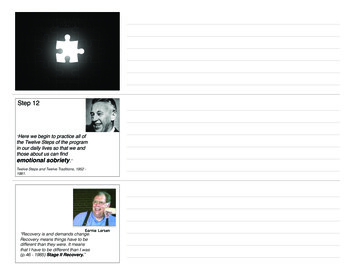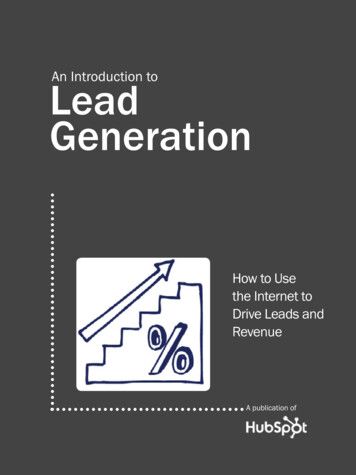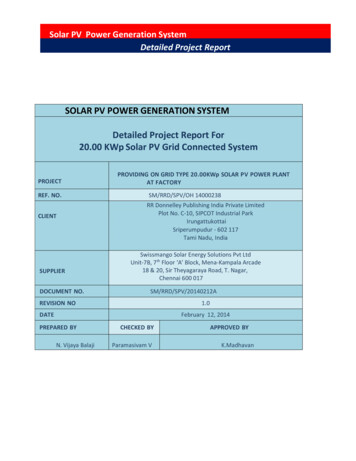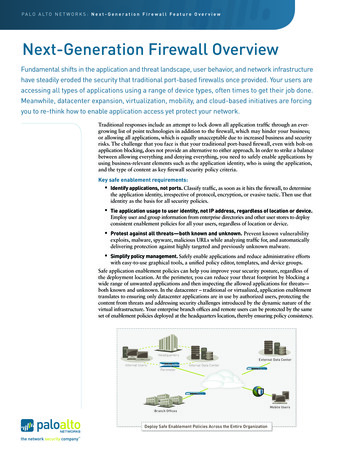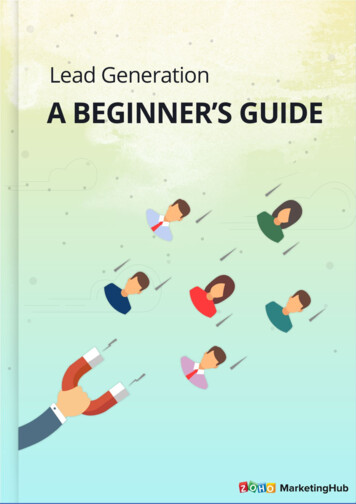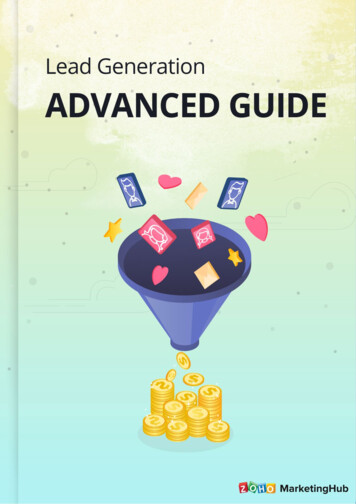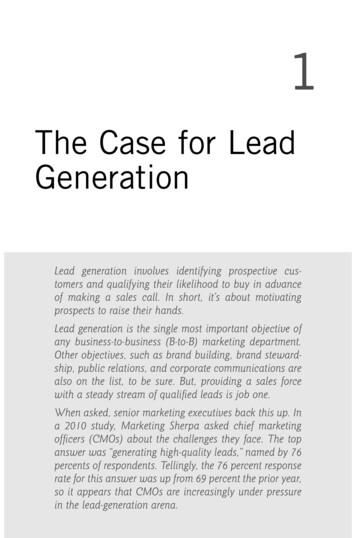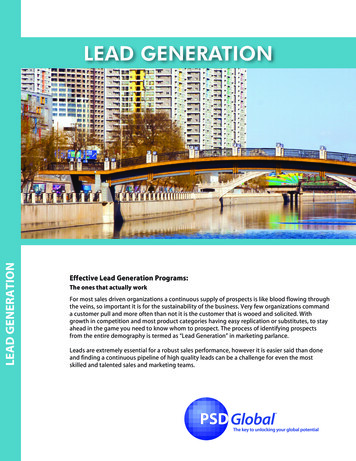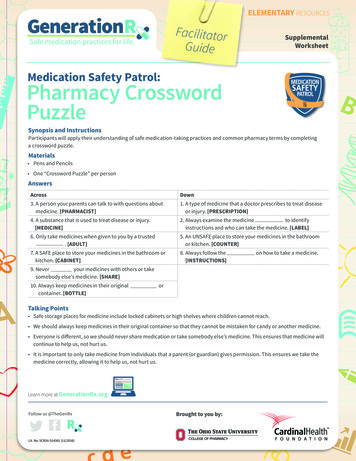
Transcription
ELEMENTARY cation Safety Patrol:Pharmacy CrosswordPuzzleBSynopsis and InstructionsParticipants will apply their understanding of safe medication-taking practices and common pharmacy terms by completinga crossword puzzle.Materials Pens and Pencils One “Crossword Puzzle” per personAnswersAcrossDown3. A person your parents can talk to with questions aboutmedicine. [PHARMACIST]1. A type of medicine that a doctor prescribes to treat diseaseor injury. [PRESCRIPTION]4. A substance that is used to treat disease or injury.[MEDICINE]2. A lways examine the medicineto identifyinstructions and who can take the medicine. [LABEL]6. Only take medicines when given to you by a trusted. [ADULT]5. An UNSAFE place to store your medicines in the bathroomor kitchen. [COUNTER]7. A SAFE place to store your medicines in the bathroom orkitchen. [CABINET]8. Always follow the[INSTRUCTIONS]on how to take a medicine.9. Neveryour medicines with others or takesomebody else’s medicine. [SHARE]10. Always keep medicines in their originalcontainer. [BOTTLE]orTalking Points Safe storage places for medicine include locked cabinets or high shelves where children cannot reach. We should always keep medicines in their original container so that they cannot be mistaken for candy or another medicine. Everyone is different, so we should never share medication or take somebody else’s medicine. This ensures that medicine willcontinue to help us, not hurt us. It is important to only take medicine from individuals that a parent (or guardian) gives permission. This ensures we take themedicine correctly, allowing it to help us, not hurt us.Learn more at GenerationRx.orgBrought to you by:Follow us @TheGenRxLit. No. 5CR16-514361 (11/2016)e
ELEMENTARY RESOURCESCrosswordPuz zlePharmacy Clues Crossword PuzzleDirectionsBComplete the crossword puzzle bymatching the clues in the table with aword listed in the word bank.Across3. A person your parents can talk to withquestions about medicine.4. A substance that is used to treat diseaseor injury.6. Only take medicines when given to youby an.7. A SAFE place to store your medicines inthe bathroom or kitchen.9. Neveryour medicines withothers or take somebodyelse’s medicine.10. Always keep medicines in their originalor container.Down1. A type of medicine that a doctorprescribes to treat disease or injury.2. Always examine the medicineto identify instructions andwho can take the medicine.5. An UNSAFE place to store yourmedicines in the bathroom or kitchen.8. Always follow theto take a medicine.Word dultShareCounteron howBottlePharmaciste
ELEMENTARY cation Safety Patrol:Prescription PuzzlersSynopsis and InstructionsParticipants will solve a variety of math problems written in the context of pharmacy. Select the worksheetappropriate for the grade level of your students.Materials Pens or pencils Crayons or markers One “Prescription Puzzlers” per personTalking PointsYou may elect to discuss with children how pharmacists use math in their profession. Examples include calculating dosages,counting medication to fill a prescription, and calculating how often patients should take their medicine.Learn more at GenerationRx.orgBrought to you by:Follow us @TheGenRxLit. No. 5CR16-514361 (11/2016)eB
ELEMENTARY RESOURCESPrescriptionPuz zlersDirectionsWrite the sum for each problem. Then, color according to the key at the bottom.BBrownOrangeBlueRedPick your owne
ELEMENTARY RESOURCESPrescriptionPuz zlersDirectionsSolve each problem by filling in the blanks.Pharmacist Polly has 6 bottles of medicine.She divides them into 2 groups. How manybottles are in each group?There are 10 pills in a bottle. An adultdivides the pills in 5 groups. How manypills are in each group?There are 4 teaspoons of medicine. An adultswallows half of them. How many teaspoonsare left?Pharmacist Polly counts 9 pills. She placesone-third of the pills in a bottle. How manypills are in the bottle?Pharmacist Polly has 8 empty bottles. Shefills one-quarter of the bottles. How manybottles did she fill?There are 12 bottles of medicine on a shelf.The Pharmacist removes half the bottles.How many are left?eB
ELEMENTARY cation Safety Patrol:Patrol DrawingsSynopsis and InstructionsParticipants will create a drawing that raises awareness about the importance of following safemedication-taking practices. Participants are encouraged to include one of the following principles:1.2.3.4.Never share your medicine with others or take somebody else’s medicine.Keep medicines in their original bottles or containers.Always store medicines in safe places within your home.Only take medicine from individuals that a parent (or guardian) gives permission.Materials Pens or pencils One “Drawing Worksheet” per personTalking PointsYou may ask participants to share with the group (or with yourself) why they elected to draw about the specific principlethey selected. For each principle, you could add: Principle 1 – Everyone is different, therefore sharing your medication with others or taking somebody else’smedication may hurt, not help you (or them). Principle 2 – This prevents medication from being mistaken as candy or another medication. Principle 3 – Safe places include locked cabinets or high shelves where children cannot easily reach. Principle 4 – This ensures that we are taking medicine according to instructions, allowing it to help us,not hurt us.Learn more at GenerationRx.orgBrought to you by:Follow us @TheGenRxLit. No. 5CR16-514361 (11/2016)eB
ELEMENTARY RESOURCESDrawingWorksheetDirectionsMake a drawing informing your community about the importance of following one of the following safemedication-taking practices:1.2.3.4.Never share your medicine with others or take somebody else’s medicine. Keep medicines in their original bottles or containers.Always store medicines in safe places within your home.Only take medicine from individuals that a parent (or guardian) gives permission.eB
ELEMENTARY cation Safety Patrol:Some Things Weren’tMeant To Be SharedSynopsis and InstructionsParticipants will apply their understanding of safe medication-taking practices by identifying items that are eithersafe or unsafe to share with others.Materials Pens or pencils One “Some Things Weren’t Meant to be Shared” worksheetTalking Points While it’s nice to share some items (e.g. toys, books), not all items were meant to be shared. Everyone is different, so we should never share items made just for you—like medication, toothbrushes, or evenyour underwear! By not sharing medication, this ensures that it will continue to help, not hurt us. Lastly, we should only take medication withpermission from a parent or guardian.Learn more at GenerationRx.orgBrought to you by:Follow us @TheGenRxLit. No. 5CR16-514361 (11/2016)eB
ELEMENTARY RESOURCESS afe S h ar ingWorksheetDirectionsBelow are items that you might find and use at home. Circle the items that are safe to share with your family and friends.Put an “X” through items that you should not share with others and need to keep for yonStuffedAnimalCookieBasketballToy TruckGermsMarkerGuitarBikeSoccer BallUnderweareB
Pharmacy Clues Crossword Puzzle Directions Complete the crossword puzzle by matching the clues in the table with a word listed in the word bank. Across 3. A person your parents can talk to with questions about medicine. 4. A


